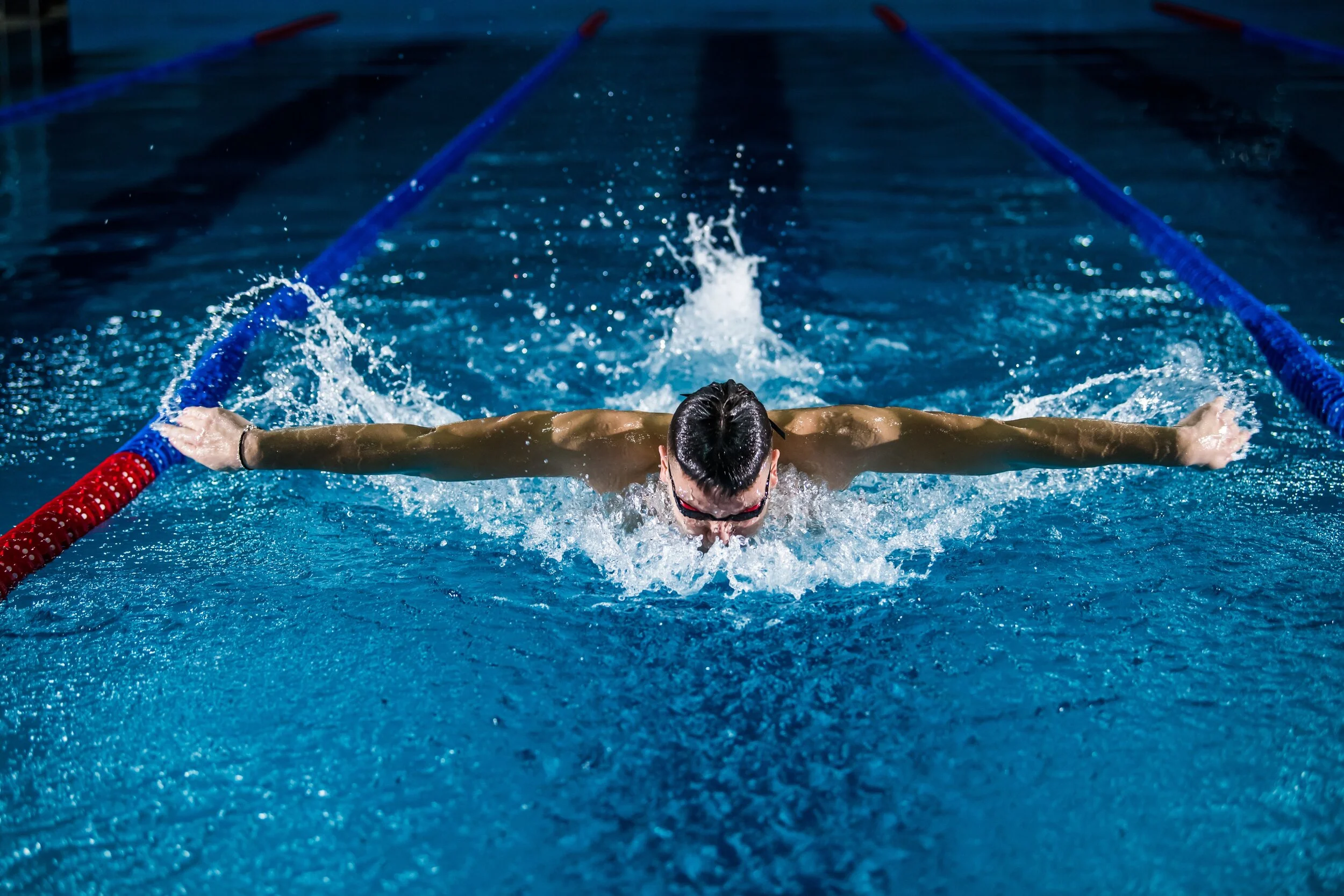Different Strokes
As a coach I cannot tell you how many triathletes have either ignored or straight up come at me any time I throw a non-freestyle workout their direction. And I’m here to say there are a few good reasons—nay, GREAT reasons—for incorporating other strokes into your swimming routine on the reg.
Reason 1: Body Moving - Use Different Muscle Groups
One of the great benefits of swimming is how many different muscle groups you engage. Core, back, shoulders, legs…you use it all. And it’s about as low-impact as you can get. Different strokes force you to rely on and engage muscle groups that often go underutilized. All-around strength prevents injury and does nothing but help you in life, so why not take the opportunity to work on it when you have the chance? In addition to improving strength, it also allows you to stretch out a lot of muscles that can be hard to get to on land. Do some easy breaststroke kick to loosen up tight shins or calves. Try some freestyle kick or swim to work on that ankle flexibility. A little fly kick or swim will really engage that core. Do a little backstroke to open up that chest. The options are endless.
Reason 2: Options for Open Water Swims
Anybody who has done an open water swim, even the pros, will let you know that open water races have the potential to get a little dicey. You will have to maneuver around people, you will be swum over (swam over?), take a few kicks to the head, if the water is particularly cold putting your face in at the beginning can be overwhelming. (For more on mass swims and starts—and some thoughts on how to handle these situations—you can go here). Being able to transition smoothly from one stroke to another as a means of getting around other swimmers, orienting yourself, or keeping your head or face out of the water if you need to catch your breath without coming to a complete stop is a valuable skill. The more comfortable you are doing so, the easier it will be to handle any situation you may face in a race.
Reason 3: Feel for the water
You will hear swimmers use this phrase a lot. Someone might have a “great feel for the water” or “lose their feel for the water”. It’s a sort of nebulous concept that has to do with a person’s ability to adjust their stroke to maximize efficiency. I am here to say: the more variety you throw into your swimming, the better your feel for the water will be. This is why we do drills. This is why we scull. All of this time spent going slowly but altering the way we pull ourselves forward give us a better sense of how we move through the water, a better “feel”. You learn what works and what doesn’t. What makes you go and what slows you down. Learning other strokes, using different techniques that may seem weird and foreign in the beginning, is a great way to improve your feel for the water.
Reason 4: It’s hard
I once had a coach that used to make us do RIDICULOUS drills like head up fly with a buoy, or backstroke kick with both arms out of the water (impossible). Whenever we asked him why he’d just say, “Because it’s hard.” You may not feel particularly graceful or productive, but your heart rate will get up and you will feel it in those muscle groups that haven’t been getting a whole lot of love. Do you do box jumps in a race? Mountain climbers? TRX? Any sort of weight lifting? No. We do them because they build important muscles, and they’re hard. This is the same thing.
Reason 5: It’s just less boring
IT. IS. SO. MUCH. LESS. BORING. It’s not doing the exact same motion for hours on end. It mixes up your view. Example: do a 1,000 straight freestyle. Then do 10 x 100 alternating freestyle and IM or your stroke of choice. Tell me which one feels longer.
The Bottom Line
Just stop fighting your coach and be open to a little butterfly every now and then. And not just because it’s entertaining for the people on deck. You don’t have to do ALL of the strokes (though I’d encourage you to try), and you don’t need to do them every workout. But really, variety is the spice of life. And that applies to the water as well.
